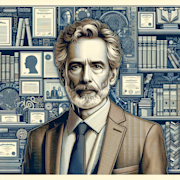Diving into the Mind of Mary Shelley: Frankenstein's Enduring Tale

Introduction
In the realm of classic literature, few novels have captivated readers and stood the test of time quite like Mary Shelley’s “Frankenstein.” Published in 1818, this timeless tale of creation and its consequences continues to resonate with readers across generations. Delving into the depths of Mary Shelley’s brilliant mind, this blog post aims to explore the origins, themes, and enduring legacy of “Frankenstein.”
Origins of a Gothic Masterpiece
Mary Shelley: A Life Shaped by Tragedy
To truly understand the creation of “Frankenstein,” we must first delve into the life of its author, Mary Shelley. Born Mary Wollstonecraft Godwin in 1797, she had the misfortune of losing her mother shortly after her birth. Growing up in the shadow of her mother’s legacy as a pioneer of feminist thought, Mary faced numerous challenges and tragedies throughout her life. These formative experiences, including the premature death of her husband Percy Shelley and the loss of her children, undoubtedly shaped the dark and melancholic themes present in “Frankenstein.”
The Inspiration behind the Monster
While Mary Shelley’s personal history undoubtedly influenced her writing, the origins of “Frankenstein” can be traced back to a fateful summer in 1816. This was the year when Mary, along with Percy Shelley, Lord Byron, and other intellectual luminaries, convened at Lake Geneva. During their stay, a haunting ghost story competition emerged among the group. It was here that Mary’s brilliant imagination gave birth to the character of Victor Frankenstein and his monstrous creation.
Themes Explored in Frankenstein
The Temptation of Playing God
One of the central themes in “Frankenstein” is the dangerous temptation to play God. Victor Frankenstein’s relentless pursuit of scientific knowledge and his subsequent ambition to create life led him down a treacherous path. Mary Shelley skillfully depicts the consequences of tampering with the natural order of life, reminding readers of the potential perils of overreaching scientific boundaries. This cautionary tale continues to resonate today in the face of ongoing advancements in the fields of genetic engineering and artificial intelligence.
The Duality of Human Nature
Mary Shelley explores the complex duality of human nature through the contrasting characters of Victor Frankenstein and his creation. While Frankenstein initially sees his creation as an abomination, the monster himself is portrayed with great sympathy. Shelley deftly challenges readers to consider the nature of humanity and the impact of abandonment and rejection on one’s psyche. By blurring the line between good and evil, she forces us to confront our own capacity for both benevolence and cruelty.
Society’s Outsiders and the Monstrous Other
Another prominent theme in “Frankenstein” is the exploration of societal rejection and the plight of outsiders. The monster serves as a physical representation of society’s fear and rejection of those who are different. Shelley examines the monster’s journey and experiences, evoking empathy and questioning the nature of prejudice and exclusion. By challenging societal norms and prejudices, she highlights the importance of embracing compassion and understanding for those who may appear different.
The Enduring Legacy of Frankenstein
A Trailblazer of Science Fiction
“Frankenstein” is often considered one of the first science fiction novels, paving the way for the genre’s future luminaries. Shelley’s creative fusion of Gothic elements and speculative science laid the foundation for countless future authors to explore the ethical and moral dilemmas inherent in scientific advancements. From H.G. Wells to Isaac Asimov, the influence of “Frankenstein” can be seen in the vast expanse of science fiction literature and popular culture.
Adaptations and Cultural Impact
Throughout the years, “Frankenstein” has been adapted into numerous plays, films, and other art forms, solidifying its place in popular culture. The iconic image of a monstrous creature with bolts through its neck has become synonymous with horror and the macabre. From Boris Karloff’s unforgettable portrayal in the 1931 film adaptation to modern interpretations in literature and cinema, Shelley’s creation has left an indelible mark on our collective imagination.
The Relevance of Frankenstein Today
Despite being written over two centuries ago, “Frankenstein” continues to be a relevant and thought-provoking tale in today’s world. The ethical questions it raises, including the responsibility of scientific endeavors and society’s treatment of outsiders, are as pertinent now as they were in Shelley’s time. In an era of rapid technological advancement, the cautionary warnings of “Frankenstein” serve as a reminder of the potential consequences of unchecked ambition and the importance of embracing empathy and understanding.
Conclusion
Mary Shelley’s “Frankenstein” remains a literary masterpiece that offers timeless insights into the human condition. Through its exploration of temptation, duality, and societal rejection, the novel continues to captivate readers and provoke contemplation. As we dive into the mind of Mary Shelley, we uncover not only the origins and enduring themes of “Frankenstein,” but also its enduring legacy as a trailblazer of science fiction and an emblem of our timeless fascination with the darker realms of the human psyche.

Johnathan Evans
Journalist
More From Classics Authority Books

Book
A Tale of Two Cities: Dickens' Reflection on Social Injustice

Book
Shelley's Prometheus: Unraveling the Mythical Threads of Frankenstein

Book
On the Road by Jack Kerouac

Book
The Firm by John Grisham

Book
The Decameron by Giovanni Boccaccio

Book
The Symbolic Allegory in George Orwells Animal Farm





